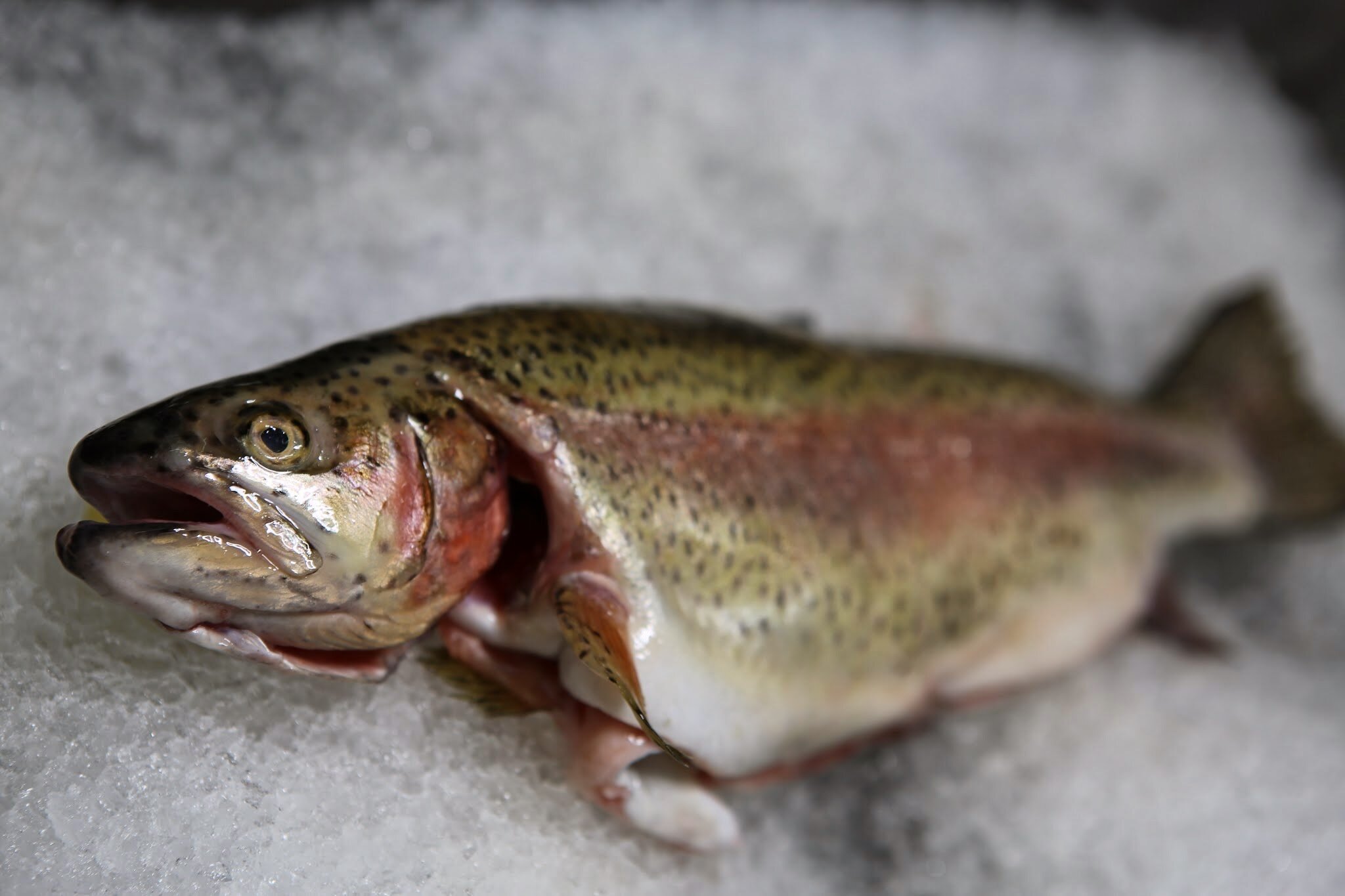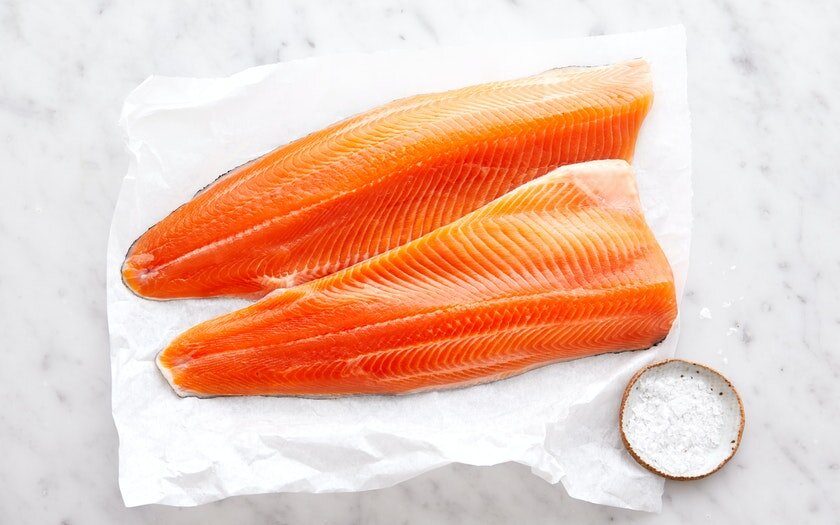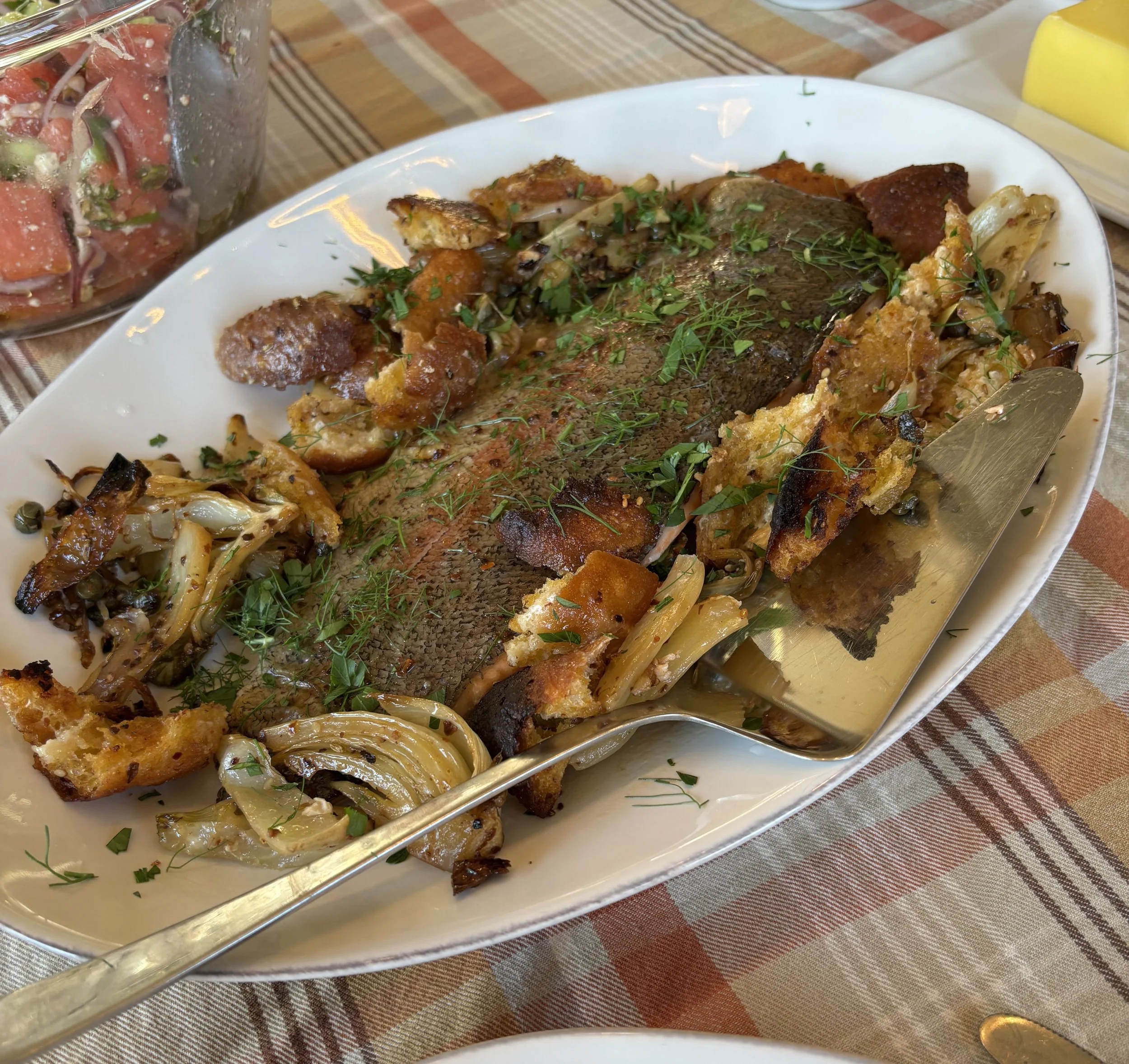McFarland Springs Rainbow Trout
The only trout that is raised on an algae-based feed pellet. Read below to learn why that is so damned important.
The Meat
Smoke, pan fry, bake, broil, grill, cure... etc. A lot of care went into raising this creature, an equal amount of care should go into cooking it. Bon appetit!
Prep
Your trout will normally arrive whole or filleted.
Gear and fishery info
These fish represent the high water mark (pun intended) of sustainable aquaculture. Kenny and Bill have invested a ridiculous amount of money, effort and time in perfecting a feed pellet that does not use (read: waste) forage fishes like sardines and anchovies. Their algae-based pellet also insures that the mercury loads in the fish are extremely low. As I said above, these are the only farmed fish in the world that eat algae based pellets. Consequently, they are the only farmed fish I have any interest in selling. Did I mention how ridiculously delicious they are? No? Oh, well... there's that too ;)
Is fish farming a good idea? In theory yes. As human populations continue to grow and the seas are exploited at ever increasing levels we simply have to start farming more fish. The question is what types of fish should we be farming? What kind of feeds do we raise them on? And what in the hell do we do with all the waste? (Please drop everything and get Paul Greenberg's book: Four Fish). We've all heard the nightmare stories about Norwegian fish farms on Canadian rivers adding red dye to the water so that the farmed salmon look “redder” (ie: more wild). And the stories of massive concentrations of fish shit wiping out all life in the immediate vicinity of fish pens. Another issue is that farmed fish are sitting ducks for native parasites. In Canada there have been huge problems with this. Farmed fish in pens have increased the parasite loads in some rivers to as much as 1,000 percent. Native fish swimming near the pens get so heavily bombarded with parasites they can't make it to the spawning grounds.
McFarlands Springs combats the major issues of fish farming as follows:
algae based feed pellets (see “parting shots” below for a detailed description of this issue)
the pens are not actually in a river but in isolated raceways
the raceways drain into a containment pond that slowly leaches the waste out across a nearby meadow—a very lush, nearby meadow I may add.
I'm spending a great deal of time writing up these details lest someone should wonder why a company called “Sea Forager” is providing its customers with a farmed fish. MacFarland Springs is not just any farmed fish. And as I hope I have illustrated, there are a lot of reasons why this trout farm should be supported by a person who loves the oceans.
#KnowYourFisherman
Kenny Belov, co-founder of seafood distributor TwoXsea, has been able to successfully raise rainbow trout on a vegetarian diet made from corn, soy and algae.
Fish Nerdism 101
The size/age ratios in McFarland Springs rainbows are as follows:
1 pound = 12-14 months
2 pounds = 18-20 months
3-4 pounds = 3-4 years
Health concerns
These fish are ridiculously good for you and have very low mercury loads (read “Fishery Info” for more details).
Parting Shots
Despite the fact that there's a global tendency toward the consumption of large piscivorous species like bluefin tuna and swordfish, we humans also happen to be industrially harvesting billions of pounds of herring, menhaden, sardine and anchovy. So if people aren't directly eating these smaller fishes, where in the hell are they all going? Simple answer: a lot of them are being converted into industrial feed pellets for farmed salmon, tuna, bass and other predatory species. There are various websites put out by the aqua- culture industry that will tell you the conversion ratios of whole fish to pellets is 1:1 or close to it.
Incidentally, if you believe this, I have some prime beach front real estate in Arizona that you may be interested in. I have yet to find any fisheries biologist who thinks industrially trawling forage fishes for the pellet industry is a good idea. Far better to eat those forage fishes directly. The guys behind McFarland Springs (Kenny Belov and Bill Foss) created their feed pellet as a direct response to the over harvest of small schooling fishes to feed farmed fish. It was said that a predatory species like a trout could not survive (let alone prosper and grow) on an algae based feed pellet but McFarland Springs has proved the nay-sayers wrong and thrown the aquaculture industry on its head. Right now, these are the trout in highest demand in San Francisco. In fact, demand far outstrips supply. And yet I have access to these fish through 2 X Sea. So on days when the swell picks up, or the bite dies down, I can always get you some ridiculously delicious, totally sustainable rainbow trout. This is nothing short of a miracle, and is a real game changer from my perspective. I tend to dislike the taste of farmed fish. But these trout are... incredible. Here's a golden character reference as far as I'm concerned: These trout, (after salmon and tuna), are the fishwife's favorite fish!
Recipes
Facts
Scientific Name: Oncorhynchus mykiss
Habitat: McFarland Springs sys: "Raising our trout locally we are lowering our carbon footprint and further promoting regional cuisine. The fish are hand harvested and processed, instead of machine processed as is customary in most farming operations."
Diet: nearly pure vegetarian diet of red algae, organic corn, and soy. Originally the feed contained approximately 3% fish oil, which has been completely eliminated to create a farmed trout that is raised on a 100% vegetarian diet. The results we achieved are stunning, and the flavor is that of a wild trout. Not to mention that Omega 3 levels are higher than that of wild salmon.
Size: see Fish Nerdism 101
Range: The farm’s extremely cold water supply comes from the natural spring headwaters of the Susan River in Northern California. These pristine waters are free of the pesticides and contaminates often found in water sources. Spring waters are also used to generate hydroelectric power to supply all the electricity for the farm.
VIDEO: see for yourself!






